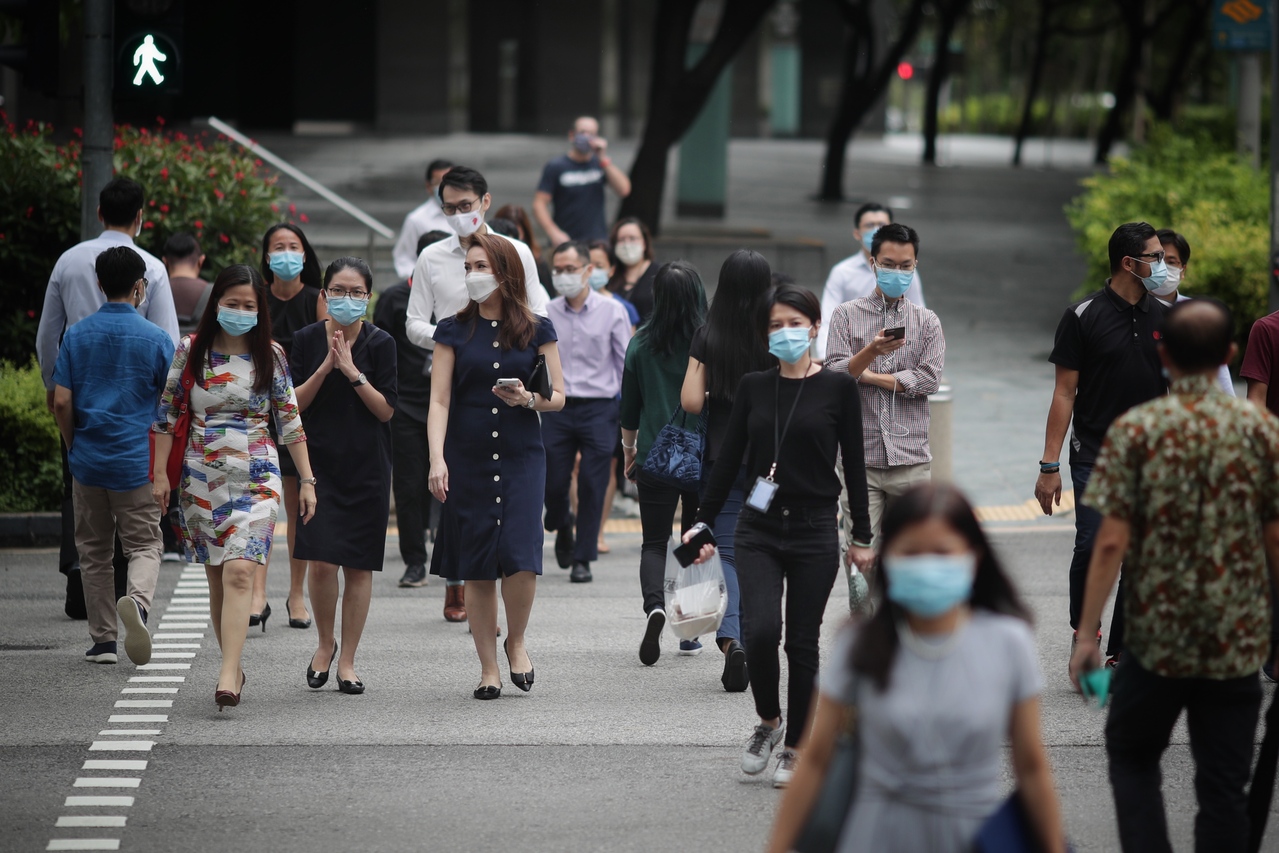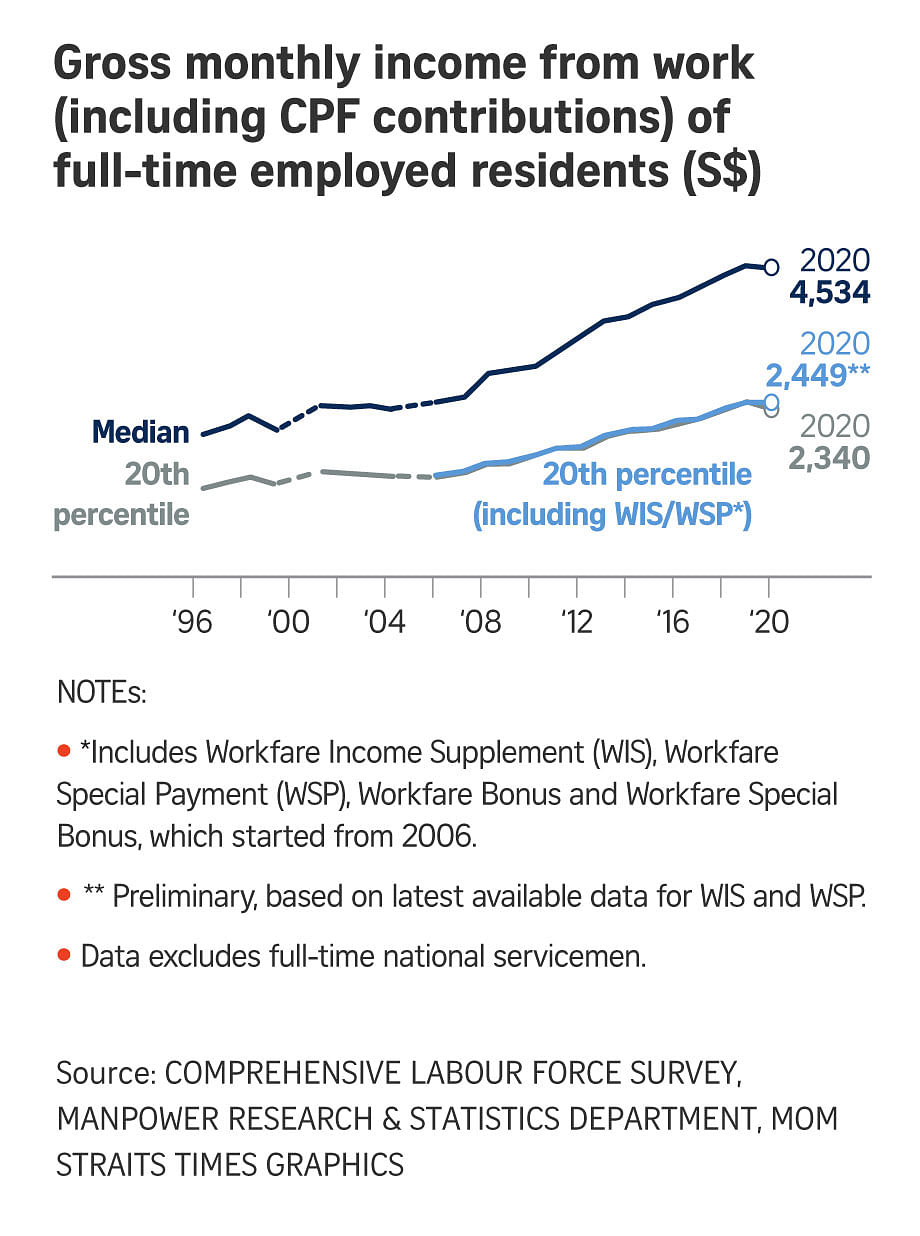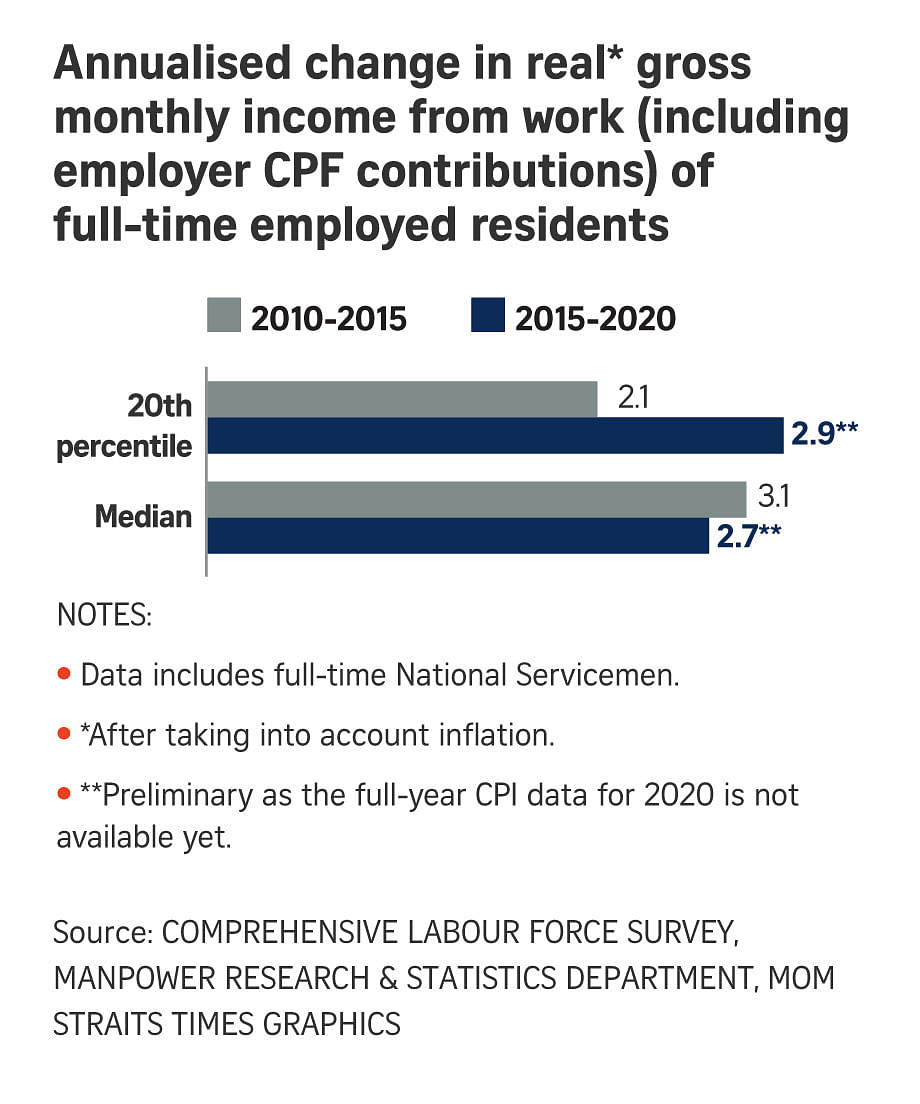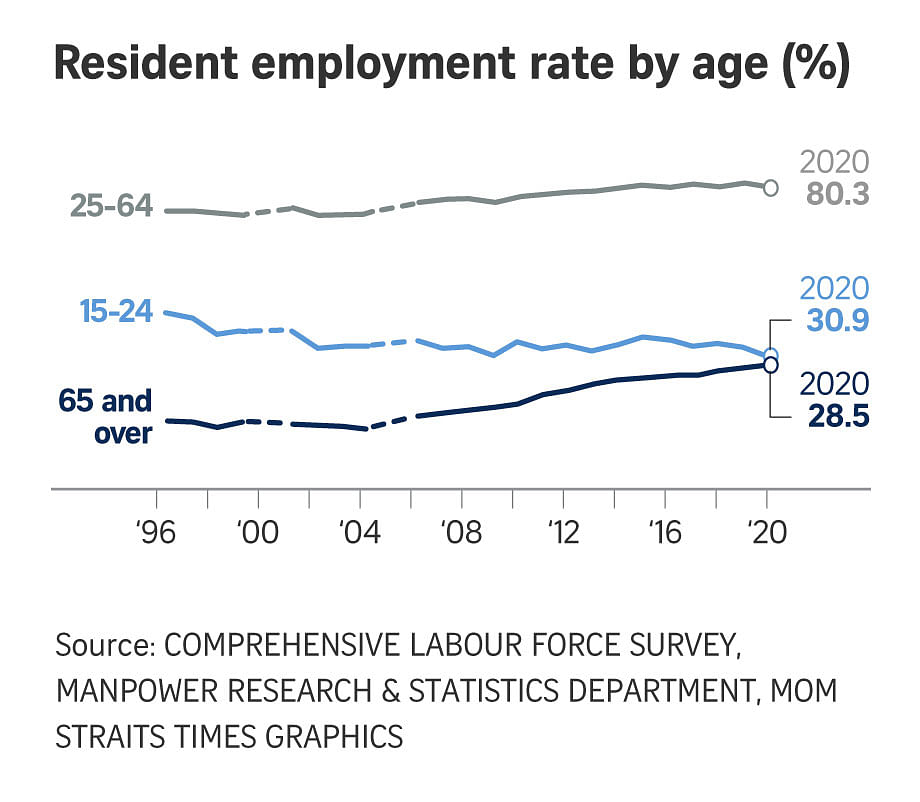Median income of Singapore residents fell for first time since 2004 due to Covid-19: MOM
Sign up now: Get ST's newsletters delivered to your inbox

Nominal median income for residents dipped by 0.6 per cent to $4,534 over the year to June, down from $4,563 last year.
ST PHOTO: JASON QUAH
Charmaine Ng, Joanna Seow
Follow topic:
SINGAPORE - The income of Singaporeans and permanent residents took a hit not felt since 2004 because of the Covid-19 pandemic, according to advance estimates released by the Ministry of Manpower (MOM) on Thursday (Dec 3).
The nominal median income for residents - that is, Singaporeans and PRs - dipped by 0.6 per cent to $4,534 over the year to June, down from $4,563 last year.
After taking inflation into account, real median income fell by 0.3 per cent, a reversal from the 2.2 per cent growth in the previous year.
The income data is for people in full-time employment and includes employer contributions to the Central Provident Fund.
Real income at the 20th percentile dropped by 4.5 per cent not including government payouts, which the ministry said is due to industries more adversely affected by the pandemic having a high concentration of lower-income earners.
The incomes of lower-income self-employed workers such as taxi or private-hire car drivers and hawkers were also impacted by the plunge in tourist arrivals, work-from-home arrangements, and temporary suspension of dine-in services at food and beverage outlets during the two-month circuit breaker period from April to June, the report said.
MOM also noted that if government payouts to lower-income earners are factored in, such as the Workfare Income Supplement and the one-off Workfare Special Payment this year, the income level at the 20th percentile this year is similar to the level last year.
Over the five years from 2015 to 2020, the income growth of full-timers at the 20th percentile (2.9 per cent per year) remained slightly higher than at the median (2.7 per cent per year).
In the latest monthly update on unemployment given by MOM on Thursday, the overall rate and the rate for citizens remained unchanged in October, at 3.6 per cent and 4.9 per cent respectively. The rate for residents rose to 4.8 per cent, up from 4.7 per cent in September. This indicates that the pace of increase in unemployment rates has slowed.
Manpower Minister Josephine Teo said at a press conference on Thursday that Singapore now needs to return to a path of job growth in the current phase of recovery.
Her ministry will work with other agencies to ensure that economic activities are brought back and have the chance to expand, because only then can job opportunities have the scope to grow, she said.
"We are also fully cognizant of the fact that when the jobs do return, they are not likely to be the same jobs as were lost during the recession. They're likely to require new skills, they are likely to be in areas that perhaps the displaced workers are not as familiar with," she added.
So the ministry will also focus on overcoming skills gaps so that employers are confident about taking on new hires and trainees.
"We are taking a very close look at how (support schemes) need to perhaps be continuously refined, enhanced, to better support the need to close the gaps between what employers are looking for, and what the job seekers have to offer," said Mrs Teo.


Meanwhile, the overall employment rate for residents aged 15 and over fell to 64.5 per cent in June, the lowest since 2014 and down from 65.2 per cent a year earlier.
"This was a smaller decrease than in past recessions, helped by slower population and labour force growth," noted MOM in its report.
MOM's annual report on the labour force is based on mid-year data. A separate report released in October with preliminary data for the labour market situation in the third quarter showed that resident employment rebounded after the circuit breaker.
Mrs Teo also noted that the Covid-19 crisis had a greater impact on the employment of foreigners than on residents. Data on the foreign workforce is not captured in Thursday's report, which is why employment rates in the report may not have fallen by as much as could be expected given the major recession, she added.
Young people aged 15 to 24 felt the worst impact on their employment rate among all the age groups as of June, with their rate falling to 30.9 per cent in June, down from 33.9 per cent a year earlier.
In the latest monthly update on unemployment, the overall rate and the rate for citizens remained unchanged in October, at 3.6 per cent and 4.9 per cent respectively. The rate for residents rose to 4.8 per cent, up from 4.7 per cent in September.
Meanwhile, the overall employment rate for residents aged 15 and over fell to 64.5 per cent in June, the lowest since 2014 and down from 65.2 per cent a year earlier.
"This was a smaller decrease than in past recessions, helped by slower population and labour force growth," noted the MOM in its report
Young people aged 15 to 24 felt the worst impact on their employment rate among all the age groups as of June, with their rate falling to 30.9 per cent in June, from 33.9 per cent a year earlier.
This was because the sectors they commonly work in - such as food and beverage services, administrative and support services, and retail trade - saw employment contract significantly amid the pandemic. The employment rate for this group, which makes up about 6 per cent of the resident workforce, has also been on a downward trend in recent years as more young people further their studies, the MOM said.
In contrast, 28.5 per cent of older residents aged 65 and over were employed in June this year, up from 27.6 per cent.
The ministry said this reflects sustained efforts to boost their employability and higher demand for essential services like cleaning and security due to the coronavirus outbreak.

For residents aged 25 to 64, who make up the bulk of the workforce, the employment rate dipped slightly to 80.3 per cent, from 80.8 per cent last June. It remained close to the average of 80.5 per cent in the past five years.
The employment rate for men fell more steeply than that for women. The rate for men fell from 88.8 per cent to 87.9 per cent, the lowest level since 2004, while that for women dipped only slightly from 73.3 per cent to 73.2 per cent.
The resident labour force participation rate remained stable, helped by rising numbers of mature workers.
But as the economy reeled from the impact of Covid-19, a record number of residents were not looking for work because they felt their job search would be fruitless. This group of discouraged workers swelled to 16,400, or 0.7 per cent of the resident labour force, in June.
This was more than double the group's size in 2019 and higher than the previous peak of 11,100 in the 2009 recession.
Lower-educated and older residents remained the largest groups among discouraged workers.
Non-professionals, managers, executives and technicians (non-PMETs) also fared worse than PMETs did in several other indicators covered in Thursday's report.
This is mainly because industries more severely impacted by Covid-19 have a higher concentration of non-PMETs, and their jobs are less suitable for remote work.
The resident unemployment rate for non-PMETs rose sharply to 6.4 per cent in June, up from 4.7 per cent a year earlier. For PMETs, the rate rose to 3.5 per cent, up from 2.9 per cent.
There was also a steeper increase in the time-related under-employment rate among non-PMETs. The overall rate rose from 3.1 per cent to 4.1 per cent over the year to June, but was below that during the global financial crisis in 2009 (4.3 per cent).

